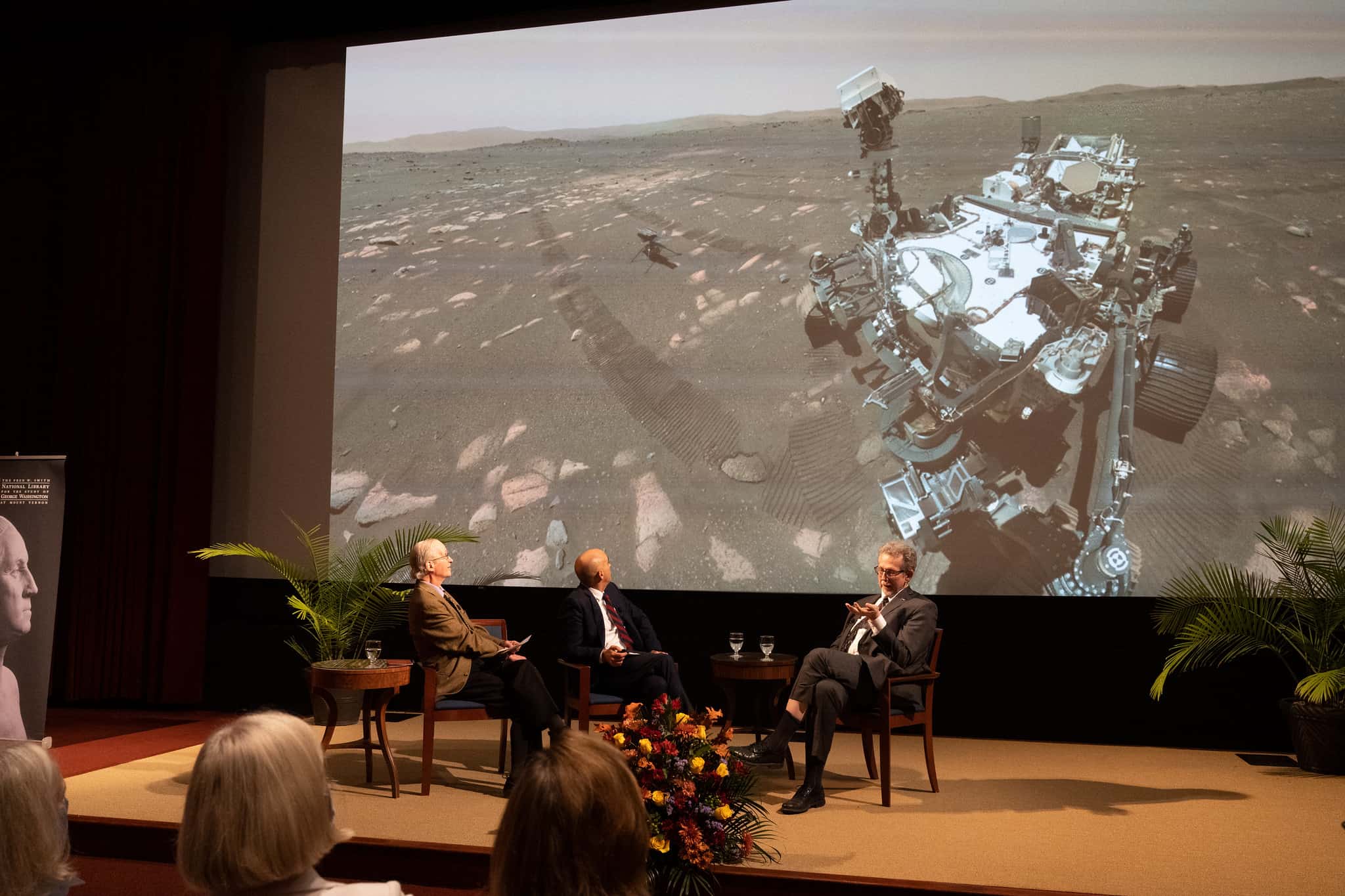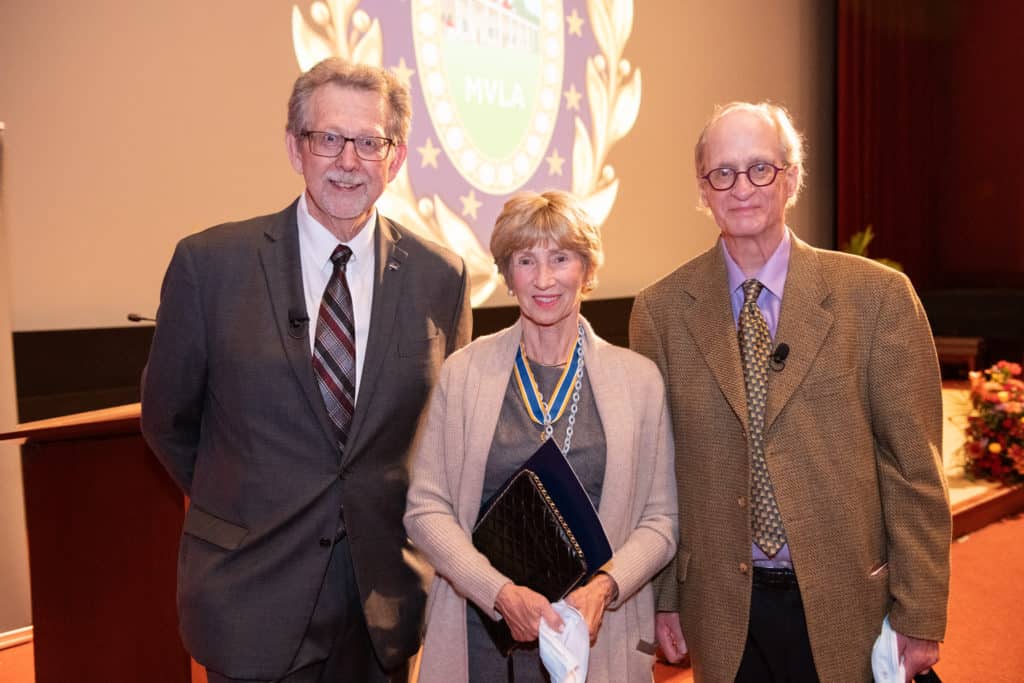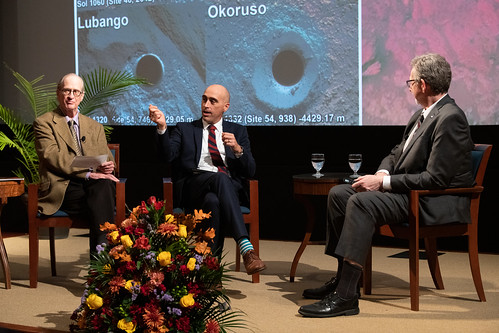By Cheryl Arvidson
Just as George Washington sought to understand the landscape of America during its early years, our desire to understand the new final frontier – space – is growing every day. James Green, the chief scientist for the National Aeronautics and Space Administration (NASA), joined the 8th George Washington Leadership Lecture on October 14 to discuss the parallels of two surprisingly similar ages of exploration and discovery.
The lecture was sponsored by the USC Price School of Public Policy and the Fred W. Smith National Library at Mount Vernon. Green was joined by Professor David Sloane of USC Price, Kevin Butterfield, the Executive Director of George Washington’s Presidential Library, and Sarah Miller Coulson, Regent of the Mount Vernon Ladies’ Association.
“What we just witnessed was a seminal event in our history,” Green said of the flurry of entrepreneurial space flights undertaken by wealthy individuals. These endeavors, posits Green, will help make space travel as common a mode of transportation as trans-Atlantic air travel became after Charles Lindbergh’s Spirit of St. Louis flight.
Green noted that when Lindbergh was preparing to fly across the Atlantic from New York to Paris in 1927, he also looked to wealthy individuals for financial backing for his venture. Before Lindbergh’s flight, the idea of traveling non-stop to Europe was not considered possible, but “we take that for granted today.”
He said space flights such as the Bezos’s Blue Origin Rocket that recently transported Star Trek star William Shatner into space will have the same impact.

“We’re watching the start of leaving New York and in 45 minutes landing in Tokyo. It’s tremendously exciting,” Green said. “The concept of having commercial activities in space is just around the corner.”
Mars explorations may inspire solutions on Earth
Green offered the audience an inside look at NASA’s exploration of Mars.
Green said NASA’s efforts to study the climate, topography, minerals, water resources and atmosphere of Mars involve the use of two rovers – Curiosity and Perseverance. They are now on the planet surface gathering the same sort of information that Washington would have been gathering to find out as much as possible about the uncharted and unpopulated lands to the West.
“We had Lewis and Clark” for the early exploration of the areas obtained in the Louisiana Purchase, Green said. “We have Curiosity and Perseverance.”
“George Washington loved to read about people’s adventures from different countries. He loved travelogues. I can just imagine him reading about what is happening on Mars from Curiosity and Persy,” Green said. “He would love this.”
Green said if you eliminated all the oceans on Earth and squeezed Earth together, the result would be an area about the size of Mars. From 2006 to today, NASA has only seen about 4% of the surface in high resolution because the planet is so big.
He said it is necessary to find out as much as possible about Mars before sending a person-piloted flight to the planet.
So far, NASA has determined that Mars is a very dry planet with very thin air. Although it is conventionally seen as a red planet, in fact the red is a patina. Once one digs down a little deeper, there is dark soil. Green said there also is “an enormous amount” of water on Mars, but it is often deep under the surface.
“We could grow asparagus, beans, and potatoes on Mars,” Green said, but NASA has also found some hazardous toxins on the surface in certain places.
“These are the things we find out that Washington would have to do too,” Green said.
The long journey ahead
Green said Mars once was quite similar to Earth, but it experienced significant climate change.
NASA is focusing on how the climate on Mars changed, when it changed, how fast it changed, and what the impact of that climate change was on any potential life that was there. It is hoped that information will help with the current efforts to address climate change.
“The climate has done nothing but change. Civilizations have come and gone on this Earth due to climate change, but today we have to focus on how fast that change occurs,” he said.
NASA plans to continue to focus on a specific area of Mars before deciding to go to a different area of the planet. And he said the rovers now on Mars took some material from the Wright Brothers flights with them to provide a little historic perspective to the space exploration.
Green said NASA “is indeed quite interested in finding life beyond Earth.”
“We are making huge strides in that area, and in our lifetime, I think we’re going to answer the question: ‘Are we not alone?'” he said.

